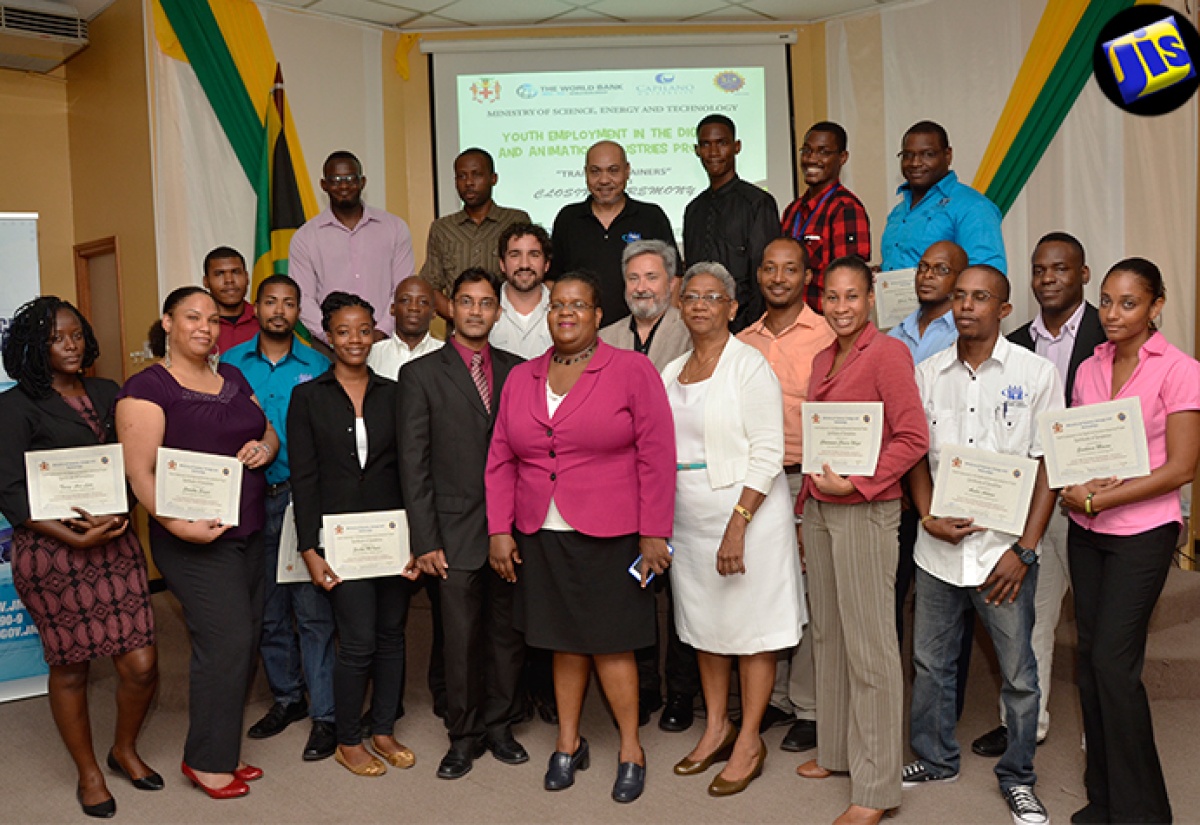Students Take Part in Animation Training
By: , September 6, 2016The Key Point:
The Facts
- The four-week training programme, which ended in July, also required the instructors to make recommendations to the Ministry of Science, Energy and Technology (MSET) about ways to improve the industry.
- One of the targets of the project is to train 2,700 animators over five years, which should be done through the training institutions that have animation as part of their curricula.
The Full Story
Twenty-three students participated in the recently concluded Train the Trainer programme 2 (TTT2) in the animation industry.
The four-week training programme, which ended in July, also required the instructors to make recommendations to the Ministry of Science, Energy and Technology (MSET) about ways to improve the industry.
Trainers for the TTT2 were Animation Instructors, Adam Sale and Don Perro from the Capilano University in Canada.
The course was held at the Vocational Training Development Institute (VTDI). It was the second component of a three-part programme, with the first completed in the summer of 2015.
Mr. Sale tells JIS News that this year’s focus was training persons in production, while last year’s Train the Trainer 1 dealt with training persons in the various methods to teach animation.
“Jamaica has a few animation studios; however, there is no large capacity for people to get experience in animation,” he notes.
Therefore, the trainers came up with small productions, which challenged the faculty/students in the course.
This, Mr. Sales explains, gave the trainees the opportunity to do animation production.
As it relates to recommendations, the instructors say there needs to be improvements in many areas to get the quality of work to an international standard.
“The capacity of Jamaicans to produce at an international level is unparalleled, as Jamaica is a very artistic-based culture, coupled with a very strong information technology and technical culture, and it’s the merging of the two that creates this special synergy,” Mr. Sale says.
He adds that the teachers here are on par with any instructor in Canada, and with assistance, the quality can be improved even more.
Mr. Sale tells JIS News that after the first Train the Trainer programme in 2015, one of the recommendations made to the Government was to have a revision of the animation standards in some institutions.
He notes that they did a review of the Edna Manley College of the Visual and Performing Arts, as well as the VTDI curriculum, adding that the schools took some of the recommendations and made some changes to their degree programmes.
Additional progress highlighted by the trainer is the new Caribbean Advanced Proficiency Examination (CAPE) module focusing on animation, which, he says, will only make the industry better, as students will receive some level of training before attempting tertiary-level qualification.
Explaining the transformation that is needed in the local industry, he says the schools need to recognise “the value in an artist-enriched educational field where creating, constructing, revising, iterating, researching and animating need to replace terms like discussing, reporting, ‘talking about’ and preparing for”.
The trainer says they are in the process of making recommendations to the Ministry to evaluate the local curricula, and emphasises that Jamaica needs to move from an academic model towards a more production-based model.
He notes that they will be reviewing the animation programme at Excelsior Community College and HEART Trust this year in an effort to achieve this.
Digital Animation Instructor at the HEART Eastern Technical Vocational Education and Training (TVET) Institute, in Stony Hill, Leighton Smith, tells JIS News that the training has been very useful.
Mr. Smith says the exposure they had, interfacing with the international trainers, has been invaluable.
“The trainers added a First-World aspect to the training, showing us a lot of their work,” he notes.
The Instructor says he is very appreciative of the Government for investing in this level of training with the international trainers, and hopes to see additional funding being allocated for the training of future animators.
Another student in the TTT2, VTDI Information and Communication Technology (ICT) Lecturer, in charge of the animation and graphic design programmes, Chavannes Chevers White, describes the training as intense, adding that she thoroughly enjoyed it.
In the meantime, Manager for Youth Employment in the Digital and Animation Industry (YEDAI) project, Margery Newland, tells JIS News that a survey is currently being done with the training institutions to look at their equipment needs, as the project currently has a little under US$1 million to purchase and upgrade equipment.
The training was an initiative under the YEDAI project, being undertaken with a loan agreement of US$20 million between the Government and the World Bank.The YEDAI project aims to create opportunities for young people in animation and tech entrepreneurship.
One of the targets of the project is to train 2,700 animators over five years, which should be done through the training institutions that have animation as part of their curricula.


